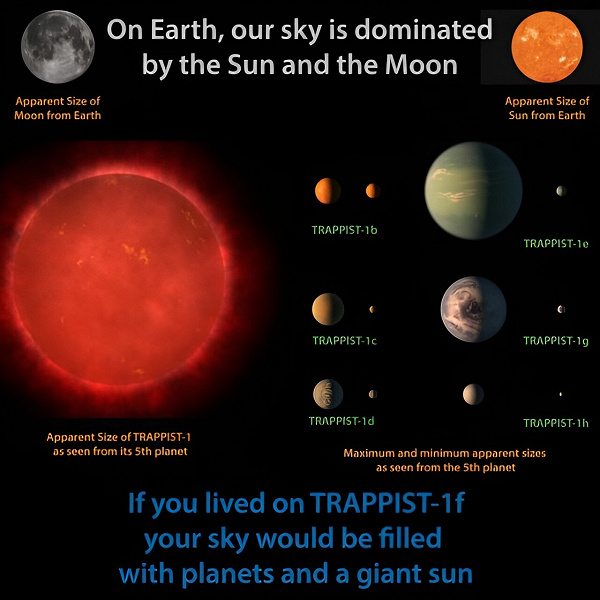Most systems like Trappist-1 can be deprived of life
The Trappist-1 system is one of the most studied exoplanet systems in our galaxy. In it, as many as 7 planets revolve around a red dwarf, at a distance of only 40 light years from Earth. The planets in this system are similar in mass and size to Earth, and previous research suggests that three or four of them could potentially support habitable conditions.
The Trappist-1 system has received a lot of attention since its opening in 2017 — at first glance it seems like an ideal system for searching for alien life. However, these expectations have been tempered by the results of a recent study. Scientists have concluded that the likelihood of life in this system is extremely low. Neither planet has a significant atmosphere, reducing the chances of life existing. Atmospheric evaporation is a key factor that leads to the barrenness of exoplanets in this system.
Initial attention to the Trappist-1 system was due to its similarity to the inner Solar System. However, there was initial uncertainty regarding the suitability of red dwarfs for supporting exoplanet habitability. Red dwarfs are characterized by lower temperatures, so a habitable planet needs to be very close to its star. In addition, red dwarfs often experience solar flares, which can be dangerous for the emergence and maintenance of life on planets. Trappist-1, which is a typical representative of red dwarfs, leads to the conclusion that the probability of life in this system is low.
The recent study marks an important step in understanding the atmospheric processes on the Trappist-1 planets. The team of scientists used the «James Webb Space Telescope» (JWST) to study the atmospheric characteristics of planets. The results confirmed the absence of significant atmospheres on the two planets closest to the star. This coincides with the situation in our solar system, where Mercury is also devoid of an atmosphere. However, it was assumed that cooler and more distant planets could retain an atmosphere. So the team turned to computer modeling. But it showed that the planets of the Trappist-1 system are losing their atmosphere much faster than expected. Scientists have calculated the rate of atmospheric evaporation based on observations of Trappist-1 and other red dwarfs.
All planets in the solar system, including the Earth, previously had dense atmospheres. However, young red dwarfs are known to emit more intense radiation than our Sun, causing planetary atmospheres to evaporate faster. Given Trappist-1's age exceeding 8 billion years, any potential atmosphere on exoplanets in this system has already disappeared.
Thus, the Trappist-1 system is likely an uninhabitable system of “warm, dry rocks” devoid of an atmosphere. This research has implications for understanding the possibility and prevalence of extraterrestrial life. Considering that red dwarfs make up about 75% of the stars in our galaxy, compared to 8% of Sun-like stars, the likelihood of finding life in the Milky Way is greatly reduced.

